Last updated: August 4, 2023
What is the Castelvetrano olive, and where does it originate from? This guide explores the origins, taste, and nutritional benefits of Castelvetrano olives.
Whether you’re an olive enthusiast or simply a curious foodie, you’re in for a real treat. Bite into a Castelvetrano olive, and you’re greeted with a uniquely sweet and buttery burst of flavor. But the Castelvetrano’s smooth, rich taste isn’t its only charm!
As I recently wrote about Kalamata olives, let’s now have a closer look at their green counterparts from Sicily. In this article, I will explore the tasty Castelvetrano olive and learn more about its history, where it comes from, what it tastes like, and much more!
What Is a Castelvetrano Olive?
Olives are certainly not for everyone, but over the years, I have learned to appreciate the flavors and nutritional benefits of the various types of olives we can choose from.
Popular in the Mediterranean diet, olives are a unique type of fruit. Unlike any other fruit, olives are rich in fat and usually taste bitter, which is not exactly what one would expect from an ordinary fruit.
One of the tastiest olives you can get your hands on, in my humble opinion at least, is Castelvetrano olives.
A Town in Sicily
Just like the finest wines, Castelvetrano olives owe much of their character to their origins. Born in the sun-drenched soils of Castelvetrano, a quaint town in the southwestern region of Sicily, Italy, these olives bear the mark of the Mediterranean in every bite.
The specific variety of olive tree, the “Nocellara del Belice”, has been cultivated in this region for centuries. In the heart of Castelvetrano, you can still find age-old olive groves, some of which have been lovingly tended by the same families for generations.
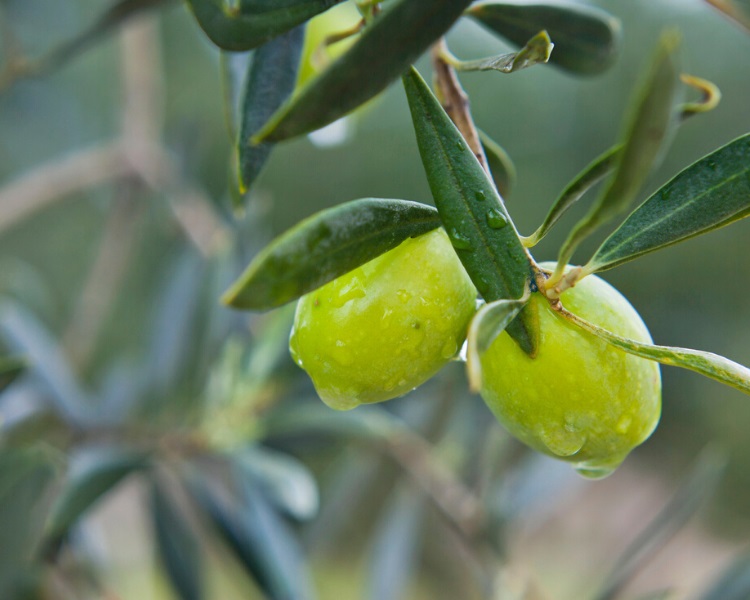
The name Nocellara del Belice refers to the beautiful Belice Valley in the western part of Sicily, where the town of Castelvetrano is located.
It’s where tradition and modern techniques blend seamlessly, preserving the olive’s unique legacy while ensuring consistent quality.
Appearance and Taste
One look at the Castelvetrano, and you’ll see it’s no ordinary olive. It has a recognizable green color and is surprisingly delicious to eat by itself. However, an acquired taste may come in handy!
The skin is smooth and firm, yet gives way easily to the bite, revealing a meaty, juicy flesh beneath. Unlike the strong, sometimes overpowering brininess of other olive varieties, the Castelvetrano is milder, with a delicate balance of sweet and salty notes.
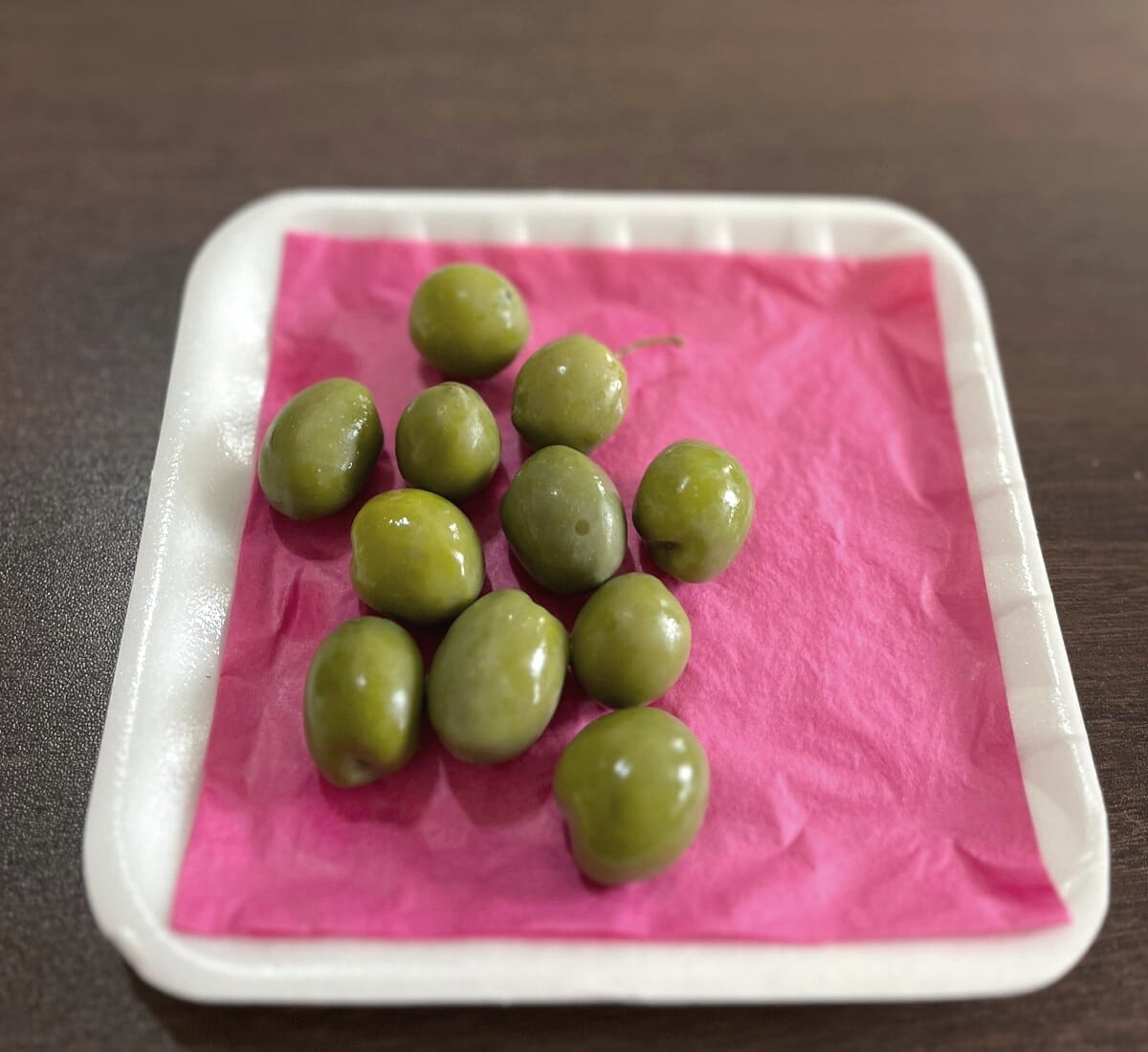
That combination of appearance, taste, and texture makes the round Castelvetrano olive a welcome ingredient on cheese platters, in Italian antipasti dishes, and in Mediterranean-style salads.
But as tasty as they may be as a little fruit, the main reason Castelvetrano olives are cultivated is because of the production of olive oil.
The Processing of Castelvetrano Olives
Like many other olives, Castelvetranos can’t be eaten straight from the tree! When they are fresh, they generally taste very bitter and are almost inedible.
The processing of olives is necessary to make them edible and taste good. And luckily, after all that processing, Castelvetrano olives still retain a good portion of their healthy fats, oils, and polyphenols (see further below).
A breakdown of the steps involved in processing Castelvetrano olives:
- Harvesting:
Harvest typically takes place in the autumn months. Unlike some other types of olives, Castelvetrano olives are picked when they’re fully ripe, but before they start to change color. This is key to their distinctive bright green appearance. - Debittering:
Fresh olives are naturally bitter, so to make them edible and enjoyable, they are immersed in a lye solution. This process helps to break down their natural bitterness, paving the way for the subtle, sweet flavor profile that Castelvetrano olives are known for. - Washing:
The olives are washed with water several times to remove the lye. - Brining:
The olives are soaked in a saltwater brine, which further enhances their flavor and helps preserve them. Unlike some other olives, Castelvetrano olives are not overly salted, contributing to their mild, less briny taste.
Once the olives are fully processed, they are usually packed in light brine in a sealed jar to be sold to the end consumer.
The brine curing process is a pretty standard food processing method, not just for olives, also for other foods such as meat and fish.
Beware of Counterfeits
The usually fresh, green color and mild flavors of Castelvetrano olives make them a popular type of olive. Unfortunately, you may occasionally come across fake Castelvetrano olives. And the best way to identify imposters is by closely examining their color.
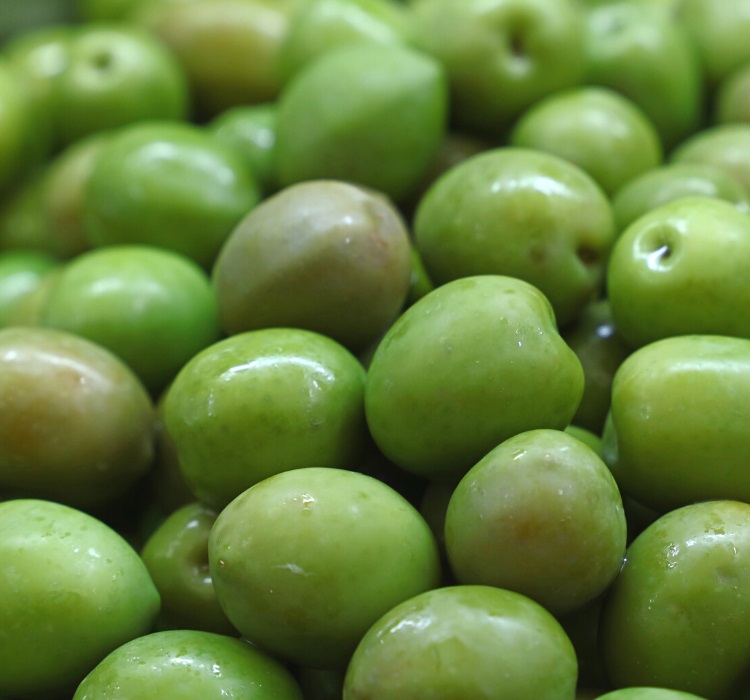
The fake ones are often just a little bit too bright or shiny, while the real ones have a more natural, somewhat pale green color.
But even so, recognizing green olives falsely marketed as Castelvetrano olives is easier said than done. The real ones are also often presented with a fresh and shiny appearance to make them look more appealing.
How to Eat Castelvetrano Olives?
Castelvetrano olives are incredibly versatile and can be incorporated into a variety of dishes or enjoyed as is.
Here are some ideas:
- Snacking:
Castelvetrano olives are perfect for simply snacking on. They pair wonderfully with a glass of wine or a cold beer. - Antipasto platter:
Castelvetrano olives are a must-have on any antipasto platter. Pair them with a selection of cheeses, cured meats, and a nice crusty bread for a simple appetizer. - Salads:
Toss some Castelvetrano olives into your salads for an extra burst of flavor. They pair particularly well with arugula, feta cheese, and a lemony vinaigrette. - Pasta dishes:
Chop up some olives and add them to your pasta sauces or toss them with spaghetti, garlic, chili flakes, and olive oil for a flavorful pasta dish. - Pizza topping:
Scatter a handful of Castelvetrano olives on your pizza before baking for a tasty and colorful addition. - Stuffed olives:
Stuff Castelvetrano olives with cheese, such as blue cheese or goat cheese, for a tasty appetizer.
Feeling hungry after reading all this? Get yourself a jar of Castelvetrano olives (if you can find them!) and try some of these recipe ideas.
Nutritional Profile and Benefits
Olives are a unique fruit. They aren’t particularly high in vitamins and minerals, but they do contain a good amount of healthy fats.
Nutritional Profile
Below is a more detailed overview of the nutritional profile of Castelvetrano olives. As you can see, it’s not so much the vitamin and mineral content that is impressive, but their fat content is. The fat in Castelvetrano olives is mostly monounsaturated fats, which is considered a good type of fat.
They are also low in carbohydrates, and protein and sugars are almost non-existent. Also take note of the relatively high sodium content, which is caused by the brine, a saltwater solution that is used to preserve the olives.
But sodium is not a bad nutrient. It is, in fact, an essential nutrient, but we should consume it in moderation, as too much sodium can result in unwanted health issues.

The below nutrition data is from the FoodData Central website and are from one particular Castelvetrano olives product.
Different products will have different data, but the below nutritional profile seems pretty standard for processed Castelvetrano olives in a jar.
| Castelvetrano Olives Nutritional Profile (100 grams) | |
|---|---|
| Energy | 233 calories |
| Fat | 23.3 g |
| Carbohydrates | 6.67 g |
| Dietary fiber | 6.7 g |
| Sodium | 867 mg |
| Protein | 0 g |
| Sugars | 0 g | Calcium | 67 mg |
| Potassium | 67 mg |
| Source: FoodData Central | |
Polyphenols
Olives generally have high levels of polyphenols, which is one of the reasons they are considered a health food in the Mediterranean diet. The same applies to Castelvetrano olives.
Polyphenols are micronutrients or chemicals with antioxidant activity. They occur naturally in plants, vegetables, and fruits, and in products manufactured from these fruits.
It is commonly understood that plant polyphenols play an essential role in human health, which various studies have shown.
Final Thoughts
While the taste of olives certainly may not be for everyone, they do offer unique flavors and nutritional benefits.
If you find it challenging to eat olives because of the bitterness, then perhaps Castelvetrano olives may be a good option as they have a much more tolerable, mildly sweet taste.
Combined with a bit of salami, cottage cheese, or goat cheese, Castelvetrano olives work really well as a nutritious and tasty afternoon snack.
So go ahead, try them out, and let me know what you think!
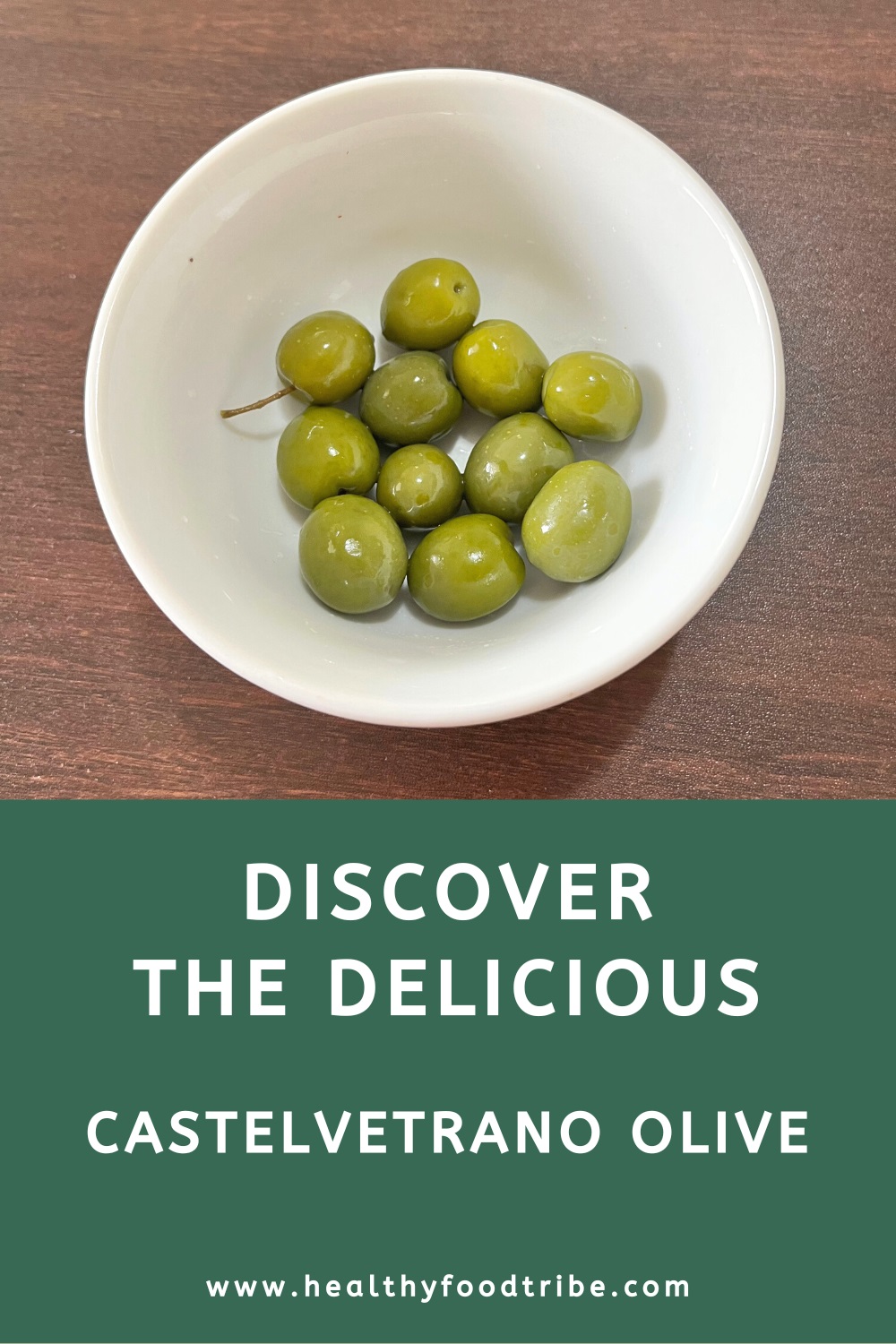
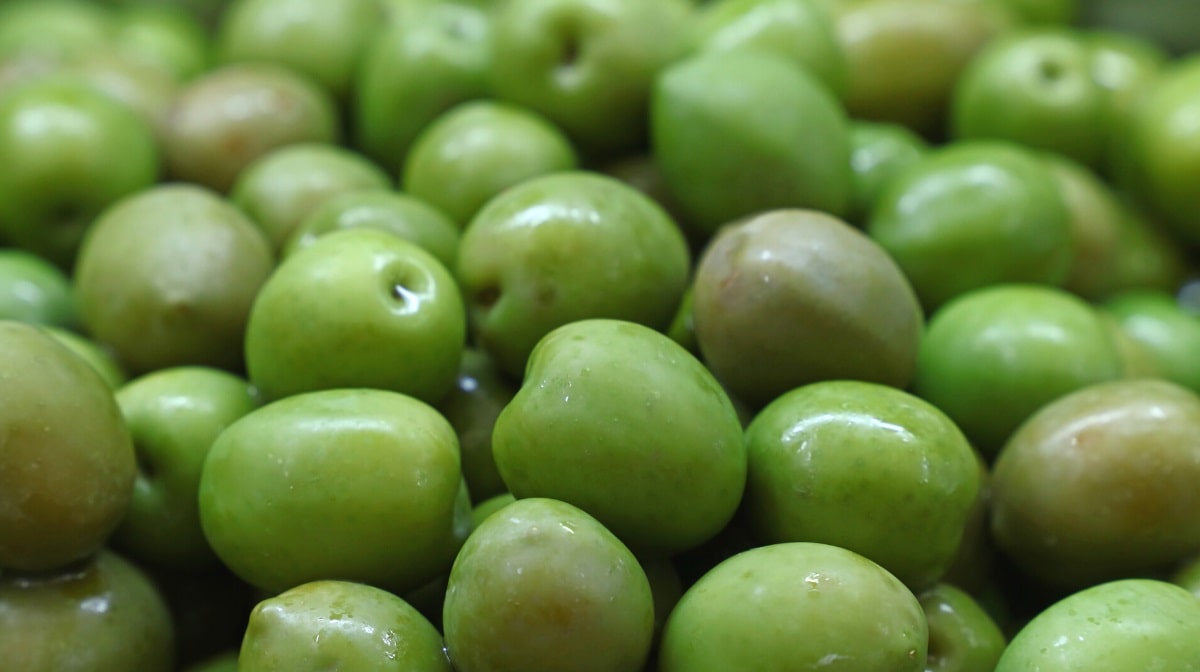
I love olives, especially Castelvetrano. The best I have ever tasted were from Ibiza, incredibly buttery and superbly delicious.
That’s great to hear, Kevin. Took me a few bites before I started to appreciate Castelvetrano olives, but now I love them too.
I hate olives with a passion. Period. Always have.
Several years ago I was at our local co-op thinking about good food. A friend works there and says we have about the best olives around. You know what I said. He says to try these. I said you must not have heard me.
He talked me into trying one… and I’m hooked for life! Divina brand, I think. I love them.
Anyway, thanks for the article. I’ve gotta get back to my olives!
Nice!
To be honest, I wasn’t always a fan of olives either, but now I love them and eat them quite a lot, especially Castelvetrano olives.